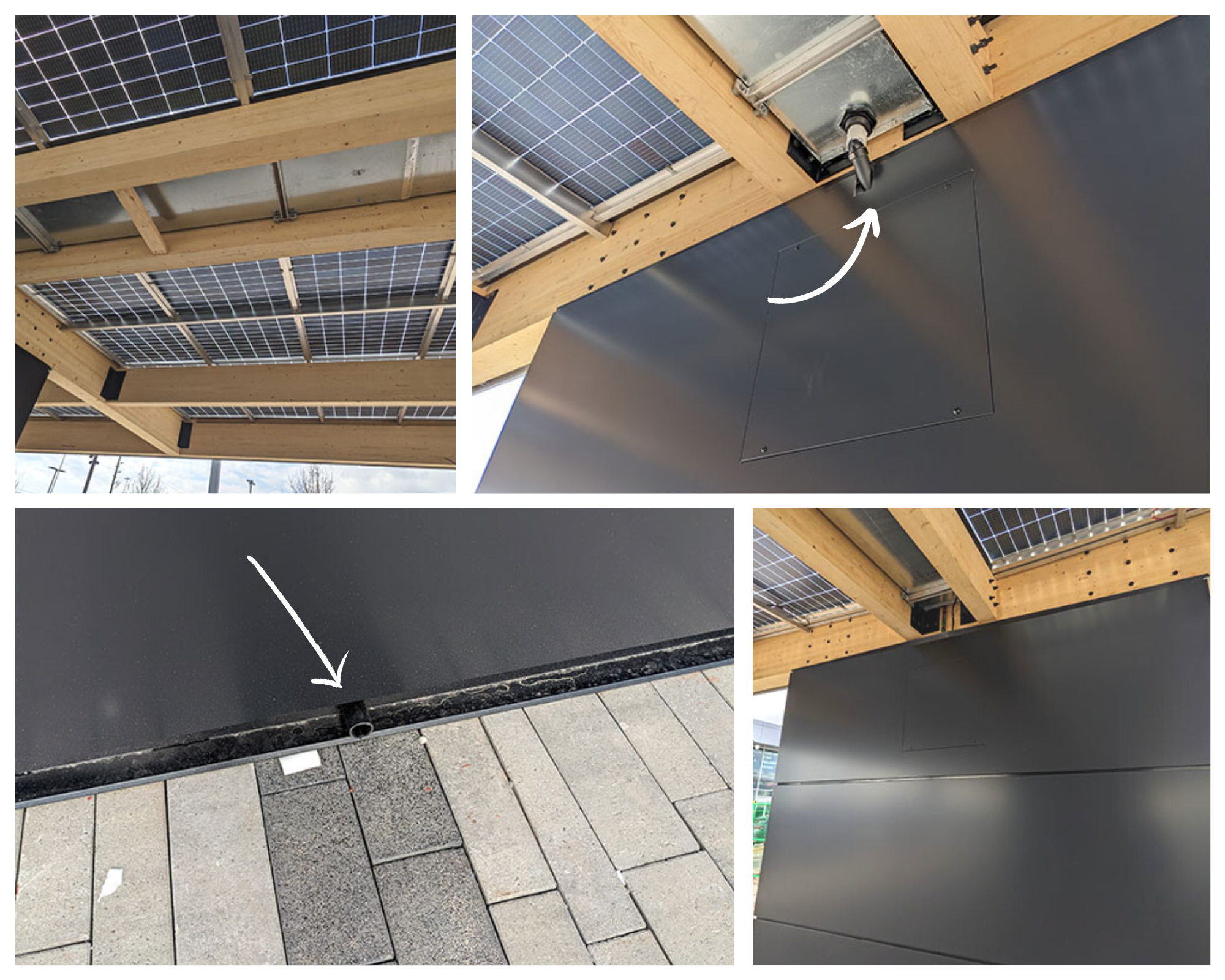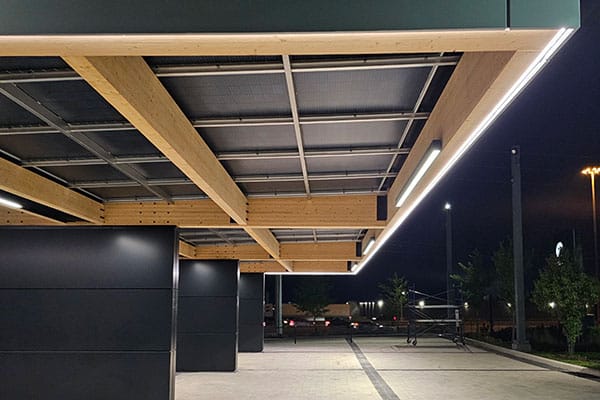- Rain management systems are crucial for solar panel carport longevity and performance, preventing issues like ice collection and component damage.
- Implementing such systems offers multiple benefits, including enhanced efficiency, reduced maintenance costs, and extended system lifespan while promoting environmental sustainability and preserving existing site conditions.
- Various options like rain diversion channels and heat trace lines ensure effective water drainage and integration with installation aesthetics.
Solar energy is gaining momentum as a renewable power source, so ensuring the longevity and efficiency of solar panel installations has become a top priority. An often-overlooked aspect of solar panel design is an effective rain management system.
Inadequate management of rainwater can negatively impact the reliability, safety and performance of a solar system.
Numerous strategies for rain management systems can be explored. To gain valuable industry insights, I interviewed Bobby MacCannell, Founder of Brightworks Energy Inc.

Bobby MacCannell, Founder at Brightworks Energy Inc.
Bobby is part of a team involved in constructing a customized solar-powered electric vehicle carport for a big brand dealership in Ontario, Canada. He knows a lot about what went into the design of the aesthetically pleasing structure and can comment on the rain management systems implemented in the structure.
Understanding the Impact of Rainwater on Solar System Performance
In some cases, rainwater can be beneficial to a solar panel system as it helps clean the surface from dirt, dust, bird droppings, and some debris.
However, rain can also cause issues if not properly managed. Accumulated rainwater can form puddles and ponding that can cause issues in freezing temperatures. Built-up rainwater can also seep into the electrical components, leading to short circuits and other damage.
Bobby highlighted the primary risks to solar systems from rain:
“Mainly, the risks come from a safety standpoint. Improper water drainage from the panel surface can result in ice buildup during colder months. In the case of a solar carport, if ice accumulates in the rain troughs, water will pool around the panels, leading to potential mechanical failure if the wiring is not adequately done. Structural and mechanical risks are also a concern if water is impeded in its path to the ground. It is crucial to ensure watertight wire management, combined with proper flashings, troughing, sealants and coatings ..”

Images showcasing a rainwater management system integrated into a customized solar-powered carport project in Ontario. (Brightworks Energy)
Benefits of Implementing a Rain Management System
Reduced maintenance results in cost savings. Clean solar panels operate more efficiently, requiring less energy to generate the desired power output. This leads to long-term cost savings and improved return on investment.
Moreover, rain management systems offer environmental benefits by reducing the need for water and cleaning agents during manual cleaning. This approach promotes a more sustainable approach to solar panel maintenance. It also allows the solar system to blend in seamlessly into the existing structural and site characteristics.
To further explore the benefits, Bobby shared insights on the solar carport and EV Charging Hub Brightworks was recently developing:
“Rainwater management is important because, in the case of a structure that is not mounted to an existing surface like a roof with a built-in rainwater system, precipitation needs to be managed. This is essential from both an environmental perspective and for the outdoor showroom where people and vehicles will be underneath. Rainwater had to drain and move freely down the troughs and downspouts. Additionally, the design ensures that once water is released to the ground, it can move away from the structure on a naturally graded slope without buildup or ice formation in colder months.”
“Structural and mechanical issues can arise without proper drainages, such as ice buildup in winter. We incorporated a heat trace line to prevent any possibility of damming. For instance, if accumulated melted snow was collected at the center of the structure on a warm spring day, it could pool up and freeze overnight. We ensured that won’t happen.”
Options for Rain Management Systems
There are various options available for rain management systems, including:
- Rain Diversion Channels: Installed around the perimeter of the solar panel array, these channels direct water away from the panels, preventing water accumulation.
- Self-Cleaning Coatings: Applied directly to the surface of solar panels, these coatings repel water and prevent dirt and dust from adhering. On some solar modules, this is not recommended. Speak to your panel manufacturer.
- Pitched Mounting Structures: By installing solar panels at an angle, rainwater naturally flows off the surface, minimizing water pooling and debris accumulation.
- Gutter Systems: Implemented on rooftops, these systems channel rainwater away from the solar panels.
To delve deeper into the rainwater management system Bobby worked on for the outdoor showroom project, I inquired about its discreetness and aesthetic integration.
Can Rainwater Management Systems be Discreet?
Bobby explained that rainwater management systems could be hidden depending on the application. In the case of the outdoor showroom, they had four columns that supported the structure and the rain trough.
They created a gentle slope on the trough and concealed all the rain management components and conduits within the columns and centre channel, which were caulked, flashed, sealed, and finished in cladding material to match the company branding.
As a result, the water’s journey to the ground remained inside the columns, hidden from view.
The water was released an inch above ground level, and the structure, positioned on a natural slope, ensured that water naturally drained away from the property. The finishing was water-tight, and a colour-matching cladding was used, making the system nearly invisible.














Comments